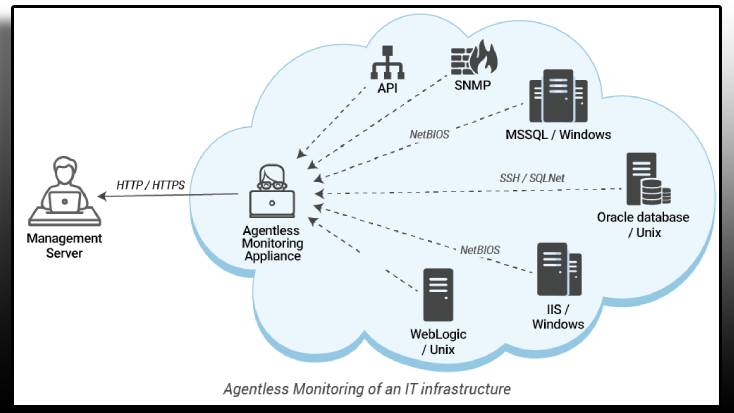Table of Contents
Introduction
Agentless monitoring is an intrusive method of network observation using application-specific APIs & several network protocols, such as SNMP & WMI, to observe the overall performance of your network assets, such as servers & applications.
Moreover, Agentless monitoring protocols or APIs collect data & performance metrics from infrastructure, devices & applications. Without installing agents on servers or devices, agentless monitoring offers scalability and comfort of maintenance.
When to use Agentless Monitoring?
Agentless monitoring allows you to impeccably observe your infrastructure components’ overall health & performance without installing the agent software. It helps you retrieve the performance metrics from several network components swiftly. The agentless approach also aids in reducing the cost & complexity of infrastructure operations and maintenance (O&M). Given these benefits, most monitoring solutions in the market are transforming to agentless or providing support for both agent & agentless monitoring.
Below are the scenarios for agentless monitoring to be helpful:
- Homogenous network environment
- High-level Monitoring
- Non-standard technology
- Fast implementation
- Network devices
- Storage devices
- Hypervisors
- Virtual desktops
- Virtual servers
- Hyper-converged infrastructure (HCI)
- User experience monitoring
Key Components of Agentless Monitoring Systems:
A successful agentless monitoring system comprises three necessary components:
- A monitoring server responsible for collecting & processing performance data from monitored systems.
- Monitoring protocols that enable the monitoring server to recover information from monitored systems without installing dedicated agents.
- Monitoring sensors are the collection of characters responsible for collecting data from monitored systems through monitoring protocols.
Together, these components offer a comprehensive view of the health & performance of the monitored systems without the need for agents.
Advantages of Agentless Monitoring:
- No agent installation is required
- It takes up less bandwidth
- Lightweight and flexible
- Scalable
- Lower costs
- Instant deployment
- Cloud-based
Disadvantages of Agentless Monitoring:
- High risk for downtime
- Limited system visibility
- Dependent on cloud APIs
- It does not offer runtime security
Conclusion:
In conclusion, agentless monitoring is a versatile and effective solution that can provide organizations with a comprehensive view of their IT infrastructure without needing to install agents on every device.
By leveraging existing management protocols & interface mechanisms, agentless monitoring provides a wide-ranging view of system health and performance while sinking the complexity and cost of traditional agent-based monitoring.

